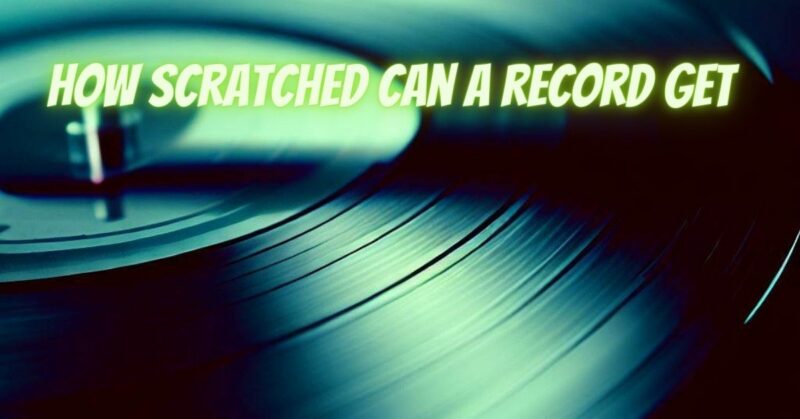Vinyl records have long been treasured for their warm analog sound and tangible charm. However, their vulnerability to scratches has always been a concern for collectors and enthusiasts. Scratches can negatively impact sound quality and, in extreme cases, render a record unplayable. In this article, we will explore the effects of scratches on vinyl records, the types of scratches they can incur, and how to prevent and mitigate damage to your cherished vinyl collection.
Understanding Record Grooves:
Vinyl records store audio information in tiny grooves that spiral from the outer edge to the center. As the stylus (needle) moves through these grooves, it reads the variations in the groove depth and width, converting them into the analog sound that we hear.
Types of Scratches:
- Surface Scratches:
Surface scratches are minor and typically affect only the outermost layer of the record. These shallow scratches may cause some surface noise but usually do not have a significant impact on sound quality.
- Groove Scratches:
Groove scratches are deeper and penetrate into the actual grooves where the audio information is stored. These scratches can result from mishandling, using a damaged or dirty stylus, or using a worn-out cartridge. Groove scratches can cause distortion, skipping, and permanent audio defects during playback.
- Deep Scratches:
Deep scratches are severe and can extend across multiple grooves, affecting a significant portion of the record’s playing surface. These scratches can severely degrade sound quality and cause the stylus to jump or skip, making some sections of the record unplayable.
Effects of Scratches on Sound Quality:
Minor surface scratches may only cause subtle surface noise during playback and have minimal impact on sound quality. However, deeper scratches can lead to various audio issues, including:
- Distortion: Groove scratches can cause audible distortion in the form of pops, clicks, or crackling sounds during playback.
- Skipping: Deep scratches can cause the stylus to jump and skip, resulting in repeated playback of the same section or skipping to another part of the record.
- Audio Defects: Severely scratched areas can result in audio dropouts, where the sound momentarily cuts out.
- Damage to Stylus and Cartridge: Playing records with deep scratches can cause additional wear on the stylus and cartridge, potentially leading to further damage.
Preventing and Mitigating Scratches:
To preserve your vinyl collection and prevent scratches:
- Handle Records with Care: Always handle records by their edges and avoid touching the grooves.
- Clean Records Regularly: Keep your records clean using proper cleaning methods and equipment to minimize the risk of dust and debris causing scratches.
- Use a Quality Stylus and Cartridge: Ensure your turntable is equipped with a high-quality stylus and cartridge to minimize damage during playback.
- Store Records Properly: Keep records in protective sleeves and store them vertically to prevent scratches caused by sliding records in and out of their jackets.
Scratches on vinyl records can range from minor surface imperfections to deep grooves that affect sound quality and playability. While minor surface scratches may have minimal impact on audio, deeper scratches can cause audible distortion, skipping, and other audio defects. To preserve your vinyl collection, handle records with care, use a quality stylus and cartridge, and store records properly. Regular cleaning and maintenance will help mitigate scratches and ensure your cherished vinyl records continue to deliver their unique and nostalgic analog sound for years to come.


